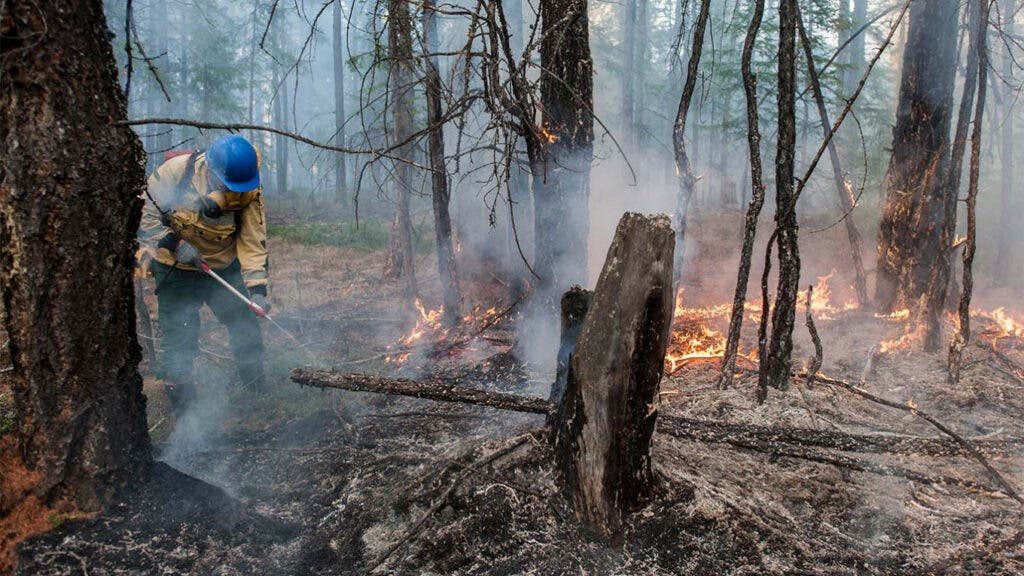In the first six months of the year, Siberia experienced a period of unusually high temperatures, including a record-breaking 38 degrees Celsius (100.4 Fahrenheit) in the town of Verkhoyansk.
This would have been essentially impossible without the influence of human-caused climate change, according to a new study.

The Russian region’s temperatures were more than five degrees Celsius (41 Fahrenheit) above average between January and June of this year. A global team of researchers from universities and meteorological services found that the likelihood of this happening without human-induced climate change is 1 in 80,000. In other words, the Siberian heatwave is a smoking gun (almost literally) for man-made climate change.
Climate change increased the chances of the prolonged heat in Siberia by a factor of at least 600. This made the heat wave “almost impossible” if the world hadn’t been warmed by greenhouse gas emissions, the researchers concluded.
They described the finding as “unequivocal evidence of the impact of climate change.”
Climate and weather
This is among the strongest results of any attribution study, which seek to better understand the role that human-induced climate change plays in weather events.
The problem is that climate deals with larger, long-term trends, and while these trends clearly indicate that the planet is heating as a result of human activity, attributing individual events to climate change is very challenging.
In this case, scientists used computer simulations to compare the climate as it is today with the climate as it would have been without human influence.
“These results show that we are starting to experience extreme events which would have almost no chance of happening without human footprint on the climate system. We have little time left to stabilize global warming at levels at which climate change would remain within the bounds of the Paris Agreement,” said in a press release Sonia Seneviratne, a co-author.
The scientists noted that even in the current climate the prolonged heat was still very unlikely. Such extreme conditions can be expected to occur less than once every 130 years, according to the study. But without rapid cuts in greenhouse gas emissions, they risk becoming frequent by the end of the century.
The heat registered in Siberia also has triggered widespread fires, with 1.15 million hectares burning in late June. This has been associated with the release of about 56 million tons of carbon dioxide, which is more than the annual emissions of some industrialized European countries such as Switzerland and Norway.
At the same time, it has accelerated the melting of permafrost, with an oil tank built on the frozen soil collapsing in May, leading to one of the worst oil spills ever recorded in the region. Greenhouse gases released by the fires and melting permafrost, as well as decreases in the planet’s reflectivity from loss of snow and ice, will further heat the planet.
“This study shows that not only was the magnitude of the temperature extremely rare but also the weather patterns that caused it. We are continuing to study how the wildfires that have burned over thousands of hectares might also affect the climate as the flames pump smoke and ash into the atmosphere,” said in a press release co-author Olga Zolina.
The Arctic is warming at twice the rate of the rest of the planet. Arctic temperatures are estimated to have risen two degrees Celsius (35.6 Fahrenheit) since 1850 compared with one degree Celsius (33.8 Fahrenheit) globally. The impact this will have on the world is less certain. This year’s Siberian heatwaves shows just how extreme conditions can become unless drastic action is taken quickly.
The study was published in World Weather Attribution.


